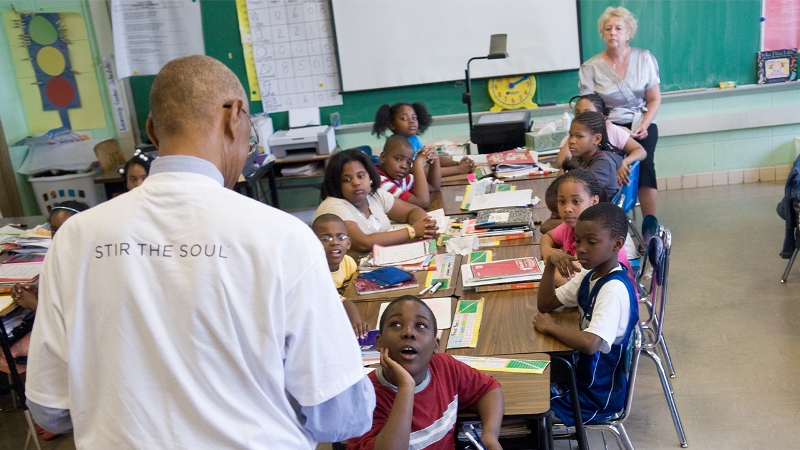Expert Primary Science Tuition Singapore for Understanding Complex Concepts
Expert Primary Science Tuition Singapore for Understanding Complex Concepts
Blog Article
Discovering the Various Mentor Techniques in Primary Science Education Today
Inquiry-based understanding, hands-on experiments, and the combination of technology are redefining just how educators engage young minds. Furthermore, collaborative methods and differentiated instruction are being used to cater to the diverse demands of pupils, improving both involvement and understanding.
Inquiry-Based Knowing
Inquiry-Based Discovering (IBL) is an instructional method that motivates pupils to explore scientific concepts with wondering about, examination, and hands-on trial and error. This technique stresses the duty of students as energetic participants in their discovering, advertising crucial thinking and analytic abilities. By involving with real-world questions, pupils become curious and determined, which improves their understanding of clinical concepts.
In IBL, educators function as facilitators, guiding students as they navigate their inquiries as opposed to supplying details straight. This student-centered strategy permits distinction, suiting various finding out styles and speeds. Pupils develop abilities in developing hypotheses, creating experiments, and analyzing data, which are critical for scientific literacy.
Additionally, IBL promotes partnership amongst trainees, motivating them to share ideas and findings. This collective inquiry advertises social skills and a sense of neighborhood within the class. The procedure of inquiry urges strength, as trainees discover to accept failing as a stepping rock toward understanding.
Hands-On Experiments
Hands-on experiments are an important part of reliable science education, matching the concepts of inquiry-based understanding. These experiments enable students to involve directly with clinical ideas, cultivating a deeper understanding via experiential learning. By adjusting materials and observing end results, young students can comprehend abstract concepts in tangible ways.
Such tasks advertise essential reasoning and analytical abilities, as trainees assume outcomes, conduct experiments, and assess outcomes. This procedure motivates them to ask questions, improve their understanding, and establish a scientific mindset. Hands-on experiments can be customized to diverse learning designs, making sure that all trainees have the possibility to involve meaningfully with the web content.
Furthermore, hands-on experiments commonly urge collaboration among peers, advertising synergy and interaction skills. Functioning in teams makes it possible for students to share ideas, go over searchings for, and find out from each other, which boosts their overall educational experience.
Incorporating hands-on experiments right into the primary science educational program not just enriches the finding out setting yet additionally grows a long-lasting rate of interest in scientific research. By proactively taking part in their education, pupils are more probable to establish an interest for clinical query that prolongs beyond the classroom.

Technology Assimilation
Integrating technology right into key science education and learning has actually ended up being progressively crucial in promoting pupil interaction and improving discovering end results. Using digital devices, such as interactive simulations, virtual laboratories, and academic software program, gives students with possibilities to discover scientific concepts in ingenious methods. These resources facilitate a much deeper understanding of complex subjects by enabling learners to imagine and control variables that would certainly be unwise in a standard class setup.
Moreover, innovation assimilation encourages individualized finding out experiences. Pupils can advance at their very own speed, revisiting difficult concepts with multimedia sources, which accommodate different knowing designs. This flexibility not only supports specific growth yet likewise cultivates a sense of freedom in learners.
In addition, technology works as a bridge to real-world scientific research, linking pupils with current research and expert payments. Accessibility to on the internet data sources and clinical journals broadens trainees' point of views on clinical inquiry and promotes vital believing abilities.
Collaborative Knowing
Collective understanding plays a vital role in key science education by promoting teamwork and interaction abilities amongst students. This approach urges students to interact, share knowledge, and participate in problem-solving, which boosts their understanding of scientific concepts. By taking part in group activities, pupils discover to articulate their concepts, listen to diverse point of views, and discuss options, all of which are vital abilities in both real-world and scholastic contexts.

Study suggests that joint learning can cause increased motivation and involvement in science topics, as pupils find enjoyment in common experiences (primary science tuition Singapore). Additionally, this method prepares pupils for future collaborative ventures, equipping them with the skills essential for effective teamwork in greater education and expert settings. Inevitably, embracing joint discovering in key scientific research education and learning can considerably enrich the understanding experience and promote a much deeper understanding of scientific inquiry
Differentiated Guideline

Set apart guideline can show up in different methods, such as differing the web content, procedures, or items of knowing. Instructors may make use of tiered jobs that offer varying degrees of complexity, allowing pupils to work at their particular readiness levels. In addition, adaptable grouping techniques can facilitate cooperation amongst trainees with different abilities, cultivating peer discovering.
Assessment plays a vital function in this approach, as it notifies instruction and aids teachers comprehend each pupil's special needs. Developmental assessments, such as tests and observations, can assist teachers in changing their strategies to improve learning results. primary science tuition Singapore. Inevitably, by carrying out distinguished direction in main scientific research education and learning, teachers can cultivate an extra fair and effective learning environment, equipping all pupils to reach their full possibility in understanding scientific sensations
Final Thought
In summary, the diverse teaching techniques in main scientific research education, consisting of inquiry-based discovering, hands-on experiments, technology integration, joint discovering, and distinguished instruction, collectively add to an extra effective learning setting. These approaches promote vital i thought about this reasoning, analytic abilities, and a much deeper understanding of clinical principles. By applying these strategies, educators can create supportive and engaging class that deal with the diverse demands of pupils, ultimately cultivating a lifelong passion in scientific research and boosting academic accomplishment.
Inquiry-Based Knowing (IBL) is a pedagogical technique that encourages trainees to discover scientific principles through wondering about, examination, and hands-on trial and error.Collective discovering plays an essential function in go to my blog primary science education by cultivating synergy and communication abilities amongst students.Research suggests that collaborative learning can lead to raised motivation and engagement in scientific research subjects, as pupils discover enjoyment in shared experiences.In fostering a comprehensive knowing environment, set apart direction arises as an essential strategy to fit the diverse requirements and capabilities of students in key science education and learning. Ultimately, by applying set apart direction in key science education and learning, educators can cultivate a more efficient and fair knowing setting, encouraging all students to reach their complete possibility in comprehending clinical phenomena.
Report this page